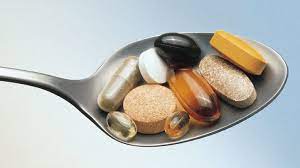Content of the Article
Vitamin FYou may not have heard of it before because it is not a vitamin itself.
Vitamin F, a term for two fatty acids – alpha linolenic acid (ALA) and linoleic acid (LA). Both are necessary for bodily functions such as the regular functioning of the brain and heart.
If it's not a vitamin, why? Vitamin F So what is it called?
Vitamin F The concept dates back to 1923, when the two fatty acids were first discovered. It was misidentified as a vitamin at the time. Although after a few years it was proven that there are no vitamins, but fatty acids, Vitamin F The name continued to be used. Today, ALA is the term used for LA and related omega 3 and omega 6 fatty acids, which expresses essential fatty acids.
TO, omega 3 fatty acids is a member of the family, LA is omega 6 family owned. Both are found in foods such as vegetable oils, nuts, and seeds.
ALA and LA are both polyunsaturated fatty acids. Polyunsaturated fatty acidsIt has many important functions in the body, such as protecting the nerves. Without them, our blood wouldn't clot, we wouldn't even be able to move our muscles. The interesting thing is that our bodies cannot make ALA and LA. We have to get these important fatty acids from food.
What is the function of vitamin F in the body?
Vitamin F – ALA and LA – these two types of fat are classified as essential fatty acids, meaning they are essential for our body health. Since the body cannot produce these fats itself, we must obtain them from food.
ALA and LA have many functions in the body, and the most well-known are:
- It is used as a source of calories. Because ALA and LA are fat, they provide 9 calories per gram.
- It creates the cell structure. ALA, LA and other fats, as the main component of their outer layers, provide structure and flexibility to all cells in the body.
- It is used for growth and development. ALA plays an important role in normal growth, vision and brain development.
- It is converted into other oils. The body converts ALA and LA into other fats essential for health.
- It helps to form signal compounds. ALA and LA are used to make signaling compounds that help regulate blood pressure, blood clotting, immune system response, and other major bodily functions.
Vitamin F deficiency
Vitamin F deficiency it is rare. In case of ALA and LA deficiency, skin dryness, hair lossVarious conditions may occur, such as slow healing of wounds, delayed growth in children, skin sores and crusting, and brain and vision problems.
What Are the Benefits of Vitamin F?
According to the research, Vitamin FThe ALA and LA fatty acids that make up the body have unique health benefits. The benefits of both are outlined below under a separate heading.
Benefits of alpha-linolenic acid (ALA)
ALA is the primary fat in the omega 3 family, a group of fats thought to have many health benefits.
ALA, eicosapentaenoic acid (EPA) and docosahexaenoic acid (DHA) converted into other beneficial omega 3 fatty acids, including
ALA, EPA, and DHA together offer numerous potential health benefits:
- It reduces inflammation. Increased consumption of ALA reduces inflammation in the joints, digestive tract, lungs, and brain.
- It improves heart health. Increased consumption of ALA reduces the risk of heart disease.
- It aids growth and development. Pregnant women need 1,4 grams of ALA per day to support fetal growth and development.
- Supports mental health. Regular intake of omega 3 fats depression ve anxiety Helps improve symptoms.
The benefits of linoleic acid (LA)
Linoleic acid (LA) is the primary oil in the omega 6 family. Like ALA, LA is converted into other fats in the body.
It has potential health benefits when consumed as needed, especially when used as a substitute for saturated fats:
- It reduces the risk of heart disease. In a study of over 300.000 adults, consuming linoleic acid instead of saturated fat reduced the risk of death from heart disease by 21%.
- It reduces the risk of type 2 diabetes. In a study of more than 200.000 people, consuming linoleic acid instead of saturated fat, type 2 diabetes reduced the risk by 14%.
- Balances blood sugar. Many studies state that linoleic acid can help control blood sugar when consumed instead of saturated fats.
Benefits of vitamin F for skin
- Retains moisture
The skin has multiple layers. The function of the outermost layer is to protect the skin from environmental pollutants and pathogens. This layer is called the skin barrier. Vitamin Fprotects the skin barrier and retains moisture.
- Reduces inflammation
Vitamin FIt is beneficial for those with inflammatory skin conditions such as dermatitis and psoriasis. because Vitamin F It helps reduce inflammation, protect cell function, and prevent excessive water loss.
- Decreases acne
Studies have determined that fatty acids reduce acne. Since fatty acids are essential for cellular function, they help repair damage.
- Protects the skin from UV rays
Important benefits of vitamin FOne of them is to alter the skin's cellular response to ultraviolet rays. This property is due to the vitamin's ability to reduce inflammation.
- Supports the treatment of skin diseases
Vitamin F atopic dermatitis, psoriasis, seborrheic dermatitis, RosaceaIt is effective in correcting the symptoms of acne-prone and skin sensitive people.
- Reduces irritation
Vitamin FLinoleic acid is an essential fatty acid used to make the ceramides that make up the outer layer of the skin. It inhibits irritants, infection from UV light, pollutants.
- Provides skin shine
Vitamin F Since it consists of essential fatty acids, it prevents the dryness and hardness of the skin, prevents irritation caused by allergies, and reduces the signs of aging.
- Soothes the skin
Vitamin F Soothes the skin in those with chronic skin conditions as it reduces inflammation.
How is vitamin F used on the skin?
Vitamin FAlthough it is said to be more effective on dry skin, it can actually be used for all skin types. Vitamin F It is found in the content of various oils, creams and serums sold on the market. with these products Vitamin F can be used on the skin.
Foods containing vitamin F
If you consume a wide variety of foods containing alpha linolenic acid and linoleic acid, Vitamin F tablet You don't need to take it. Most foods typically contain both.
The amounts of linoleic acid (LA) in some common food sources are as follows:
- Soybean oil: One tablespoon (15 ml) of 7 grams of linoleic acid (LA)
- Olive oil: 15 grams of linoleic acid (LA) in one tablespoon (10 ml)
- Corn oil: 1 tablespoon (15 ml) 7 grams of linoleic acid (LA)
- Sunflower seeds: 28 grams of linoleic acid (LA) per 11-gram serving
- Walnuts: 28 grams of linoleic acid (LA) per 6-gram serving
- Almonds: 28 grams of linoleic acid (LA) per 3.5-gram serving
Most foods high in linoleic acid contain alpha linolenic acid, albeit in smaller amounts. Particularly high levels of alpha linolenic acid (ALA) are found in the following foods:
- Flaxseed oil: One tablespoon (15 ml) has 7 grams of alpha linolenic acid (ALA)
- Flaxseed: 28 grams of alpha linolenic acid (ALA) per 6.5-gram serving
- Chia seeds: 28 grams of alpha linolenic acid (ALA) per 5-gram serving
- Hemp seeds: 28 grams of alpha linolenic acid (ALA) per 3-gram serving
- Walnuts: 28 grams of alpha linolenic acid (ALA) per 2.5-gram serving
F What are the side effects of the vitamin?
Vitamin F There are no known side effects of using it for the skin – provided it is used as directed, of course. It can be used morning or night, but if the product contains a retinol or vitamin A, it is best to use it at bedtime.
Because retinol and products containing vitamin A may cause redness or dryness. That's why you have to be careful.

















